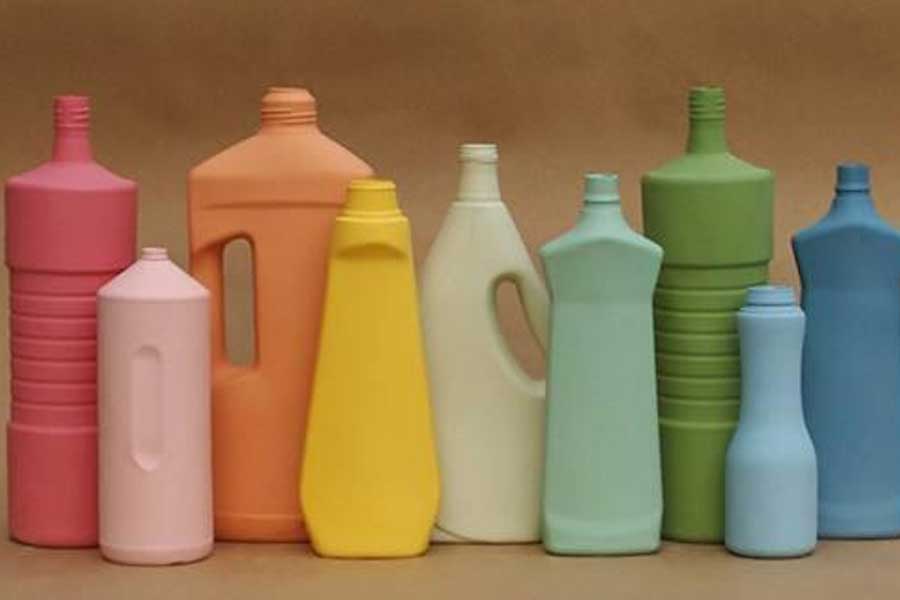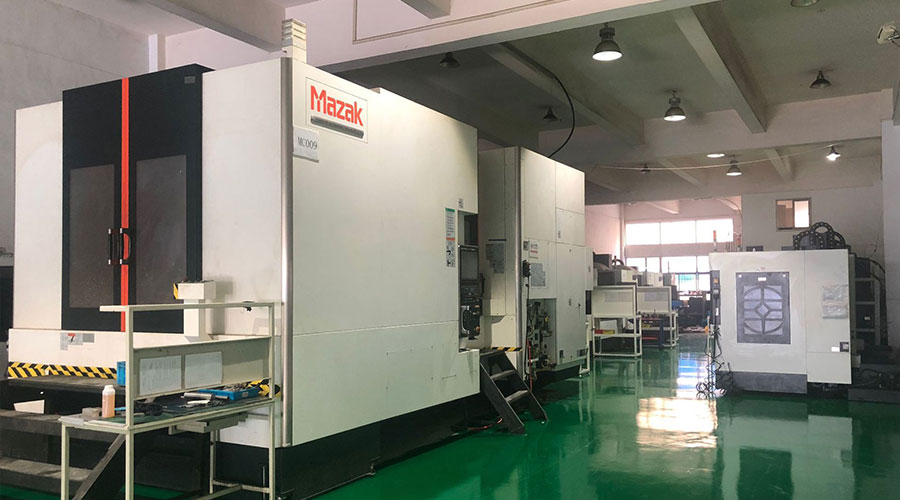Plastic is a polymer compound that is polymerized by monomer as raw material through addition polymerization or polycondensation reaction. It is commonly known as plastic or resin. The composition and shape can be freely changed. It is composed of synthetic resin and fillers, plasticizers, stabilizers, and lubricants. , Pigment and other additives. The main component of plastic is resin. Resin accounts for about 40%-100% of the total weight of plastics. What are the characteristics of plastic? The basic properties of plastics are mainly determined by the nature of the resin, but additives also play an important role. Some plastics are basically composed of synthetic resins, with no or little additives, such as plexiglass, polystyrene, etc. This article will take you to understand the characteristics of plastics.
(1) What are the characteristics of plastics?
1. Plastic is malleable
As the name suggests, plastic is a material that can be molded. The so-called plasticity of plastic means that the solid plastic can be softened by heating, and then the softened plastic is placed in a mold, and then it is cooled and re-solidified into a solid with a certain shape. This property of plastics also has certain drawbacks, that is, it is easy to soften and deform when exposed to heat. Some plastics can even be deformed after being scalded with hot water. Therefore, plastic products are generally not suitable for contact with boiling water.
2. Plastic is flexible
Some plastics, like synthetic fibers, have a certain degree of elasticity. When it is stretched by an external force, the curled molecules are straightened by flexibility, but once the tension is removed, it will return to the original curled state, which makes the plastic elastic, such as those of polyethylene and polyvinyl chloride. Film products. But some plastics are not elastic.
3. Plastic has high strength
Although plastic is not as hard as metal, it still has relatively high strength and wear resistance compared with glass, ceramics, wood, etc. Plastic can be made into strong gears and bearings on the machine.
4. Plastic has corrosion resistance
Plastics will not rust in humid air like metals, nor will they rot or be corroded by microorganisms in humid environments like wood. In addition, plastics are resistant to acid and alkali corrosion. Therefore, plastics are often used as water and liquid pipelines in chemical plants, doors and windows in buildings, and so on.
5. Plastic is insulating
The molecular chain of plastics is covalently bonded by atoms, and molecules can neither ionize nor transfer electrons in the structure, so plastics are insulating. Plastics can be used to make wire wraps, electrical sockets, and electrical appliances.
(2) What are the characteristics of common general-purpose plastics?
(1) PE
Polyethylene is the most productive variety in the plastics industry. Polyethylene is a thermoplastic resin made by polymerization of ethylene. In industry, it also includes copolymers of ethylene and a small amount of α-olefins. Polyethylene is odorless, non-toxic, feels like wax, has excellent low temperature resistance (the minimum use temperature can reach -100-70 °C), has good chemical stability, and is resistant to most acids and alkalis (not resistant to Acid of oxidizing nature). It is insoluble in general solvents at room temperature, has low water absorption and excellent electrical insulation. Polyethylene is generally used in plastic wrap, vest-style plastic bags, plastic food bags, milk bottles, buckets, water bottles, etc.
(2) PP
Polypropylene is a thermoplastic resin made by the polymerization of propylene. Polypropylene is a non-toxic, odorless and tasteless milky white highly crystalline polymer with a density of only 0.90-0.91g/cm3, which is currently one of the lightest varieties of all plastics. It is particularly stable to water, with a water absorption rate of only 0.01% and a molecular weight of about 80,000 to 150,000. The moldability is good, but because of the large shrinkage rate (1%-2.5%), thick-walled products are easy to dent. For some parts with high dimensional accuracy, it is difficult to meet the requirements, and the surface of the products has good gloss. Polypropylene is generally used in microwave tableware, basins, plastic barrels, thermos shells, woven bags, etc.

(3) PVC
Polyvinyl chloride is a polymer formed by the polymerization of vinyl chloride monomer in peroxides, azo compounds and other initiators; or under the action of light and heat according to the free radical polymerization reaction mechanism. In actual use, PVC materials often add stabilizers, lubricants, auxiliary processing agents, pigments, impact resistance agents and other additives. It has non-flammability, high strength, weather resistance and excellent geometric stability. Polyvinyl chloride is generally used in cling film, plastic shoes and leather products, films, cables, and plastic bags.
Special attention: When PVC is made into soft plastics such as cling film and plastic bags, a large amount of auxiliary materials must be added. Some of them are toxic. The harmful substances in this material may cause cancer after being released.
(4) PS
Polystyrene refers to a polymer synthesized from styrene monomer through radical addition polymerization. It is a colorless and transparent thermoplastic with a glass transition temperature higher than 100°C, so it is often used to make various Need to withstand the temperature of boiling water disposable containers, and disposable foam lunch boxes. In addition, polystyrene is also used in combs, boxes, ballpoint pen holders, children’s toys, plastic shopping bags, etc.
Special attention: heavy metals and other banned additives are used in the production of disposable tableware, which dissolve with the water, vinegar, and oil contained in the food, and enter the human body, which may cause indigestion, local pain, liver disease and other diseases.
(5) ABS
ABS is acrylonitrile-butadiene-styrene copolymer. ABS is a thermoplastic polymer material structure with high strength, good toughness, and easy processing and forming. ABS resin is a terpolymer of acrylonitrile, 1,3-butadiene and styrene. It can behave normally in an environment of -25℃-60℃, and has good formability. The processed product has a smooth surface and is easy to dye and electroplating. And it can be compounded with a variety of resins to form a blend. ABS is mainly used for alloys, plastics, and ABS grades.
(3) The characteristics and fluidity of plastics
The fluidity of plastic is a very important property, which is directly related to the quality of plastic products.
The fluidity of thermoplastics can generally be analyzed from a series of indexes such as molecular weight, melt index, Archimedes spiral flow length, apparent viscosity and flow ratio (process length/plastic part wall thickness).
Small molecular weight, wide molecular weight distribution, poor molecular structure regularity, high melt index, long spiral flow length, low apparent viscosity, high flow ratio, good fluidity, plastics with the same product name must check their instructions to determine whether their fluidity is applicable For injection molding.
According to mold design requirements, the fluidity of commonly used plastics can be roughly divided into three categories:
Good fluidity PA, PE, PS, PP, CA, poly(4) methylpentene;
Medium fluidity polystyrene series resins (such as ABS, AS), PMMA, POM, polyphenylene ether;
Poor fluidity: PC, hard PVC, polyphenylene ether, polysulfone, polyarylsulfone, fluoroplastics.
The fluidity of various plastics also changes due to various molding factors. The main influencing factors are as follows:
1. High temperature material temperature increases fluidity, but different plastics also have differences, PS (especially impact-resistant and higher MFR value), PP, PA, PMMA, modified polystyrene (such as ABS, AS ), the fluidity of PC, CA and other plastics varies greatly with temperature. For PE and POM, the temperature increase or decrease has little effect on their fluidity. Therefore, the former should adjust the temperature during molding to control fluidity.
2. As the pressure of injection molding increases, the molten material is subject to greater shearing and fluidity, especially PE and POM are more sensitive, so the injection pressure should be adjusted to control fluidity during molding.
3. The form, size, layout, cooling system design, flow resistance of the molten material (such as the surface finish, the thickness of the channel section, the shape of the cavity, the exhaust system) and other factors of the mold structure casting system directly affect the molding of the molten material. The actual fluidity in the cavity will reduce the fluidity if it causes the molten material to lower the temperature and increase the fluidity resistance. When designing the mold, a reasonable structure should be selected according to the fluidity of the plastic used.
During molding, the material temperature, mold temperature, injection pressure, injection speed and other factors can also be controlled to appropriately adjust the filling condition to meet the molding needs.
Link to this article: What are the characteristics of plastic?
Reprint Statement: If there are no special instructions, all articles on this site are original. Please indicate the source for reprinting:https://www.cncmachiningptj.com/,thanks!
 Sheet metal, beryllium, carbon steel, magnesium, 3D printing, precision CNC machining services for heavy equipment, construction, agriculture and hydraulic industries. Suitable for plastics and rare alloys machining. It can turn parts up to 15.7 inches in diameter. Processes include swiss machining,broaching, turning, milling, boring and threading. It also provides metal polishing, painting, surface grinding and shaft straightening services. The production range is up to 50,000 pieces. Suitable for screw, coupling, bearing, pump, gearbox housing, drum dryer and rotary feed valve applications.PTJ will strategize with you to provide the most cost-effective services to help you reach your target,Welcome to Contact us ( [email protected] ) directly for your new project.
Sheet metal, beryllium, carbon steel, magnesium, 3D printing, precision CNC machining services for heavy equipment, construction, agriculture and hydraulic industries. Suitable for plastics and rare alloys machining. It can turn parts up to 15.7 inches in diameter. Processes include swiss machining,broaching, turning, milling, boring and threading. It also provides metal polishing, painting, surface grinding and shaft straightening services. The production range is up to 50,000 pieces. Suitable for screw, coupling, bearing, pump, gearbox housing, drum dryer and rotary feed valve applications.PTJ will strategize with you to provide the most cost-effective services to help you reach your target,Welcome to Contact us ( [email protected] ) directly for your new project.
Link to this article:What are the characteristics of plastic?
Reprint Statement: If there are no special instructions, all articles on this site are original. Please indicate the source for reprinting.:Cut Wiki,Thanks!^^
